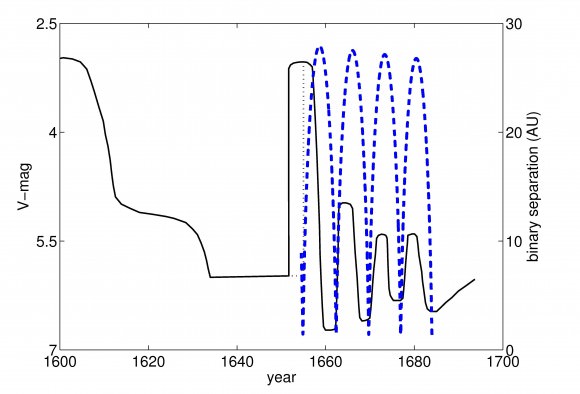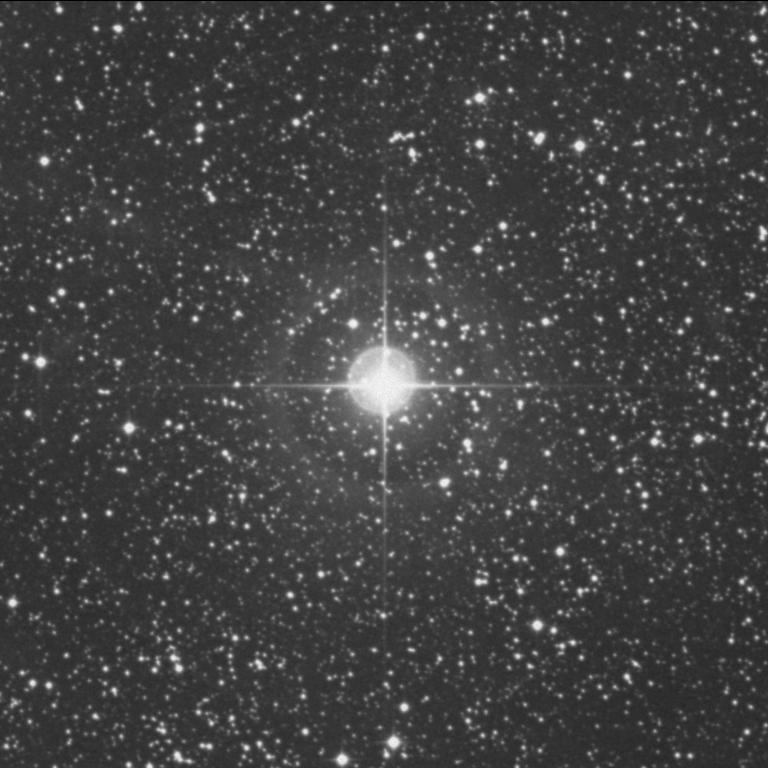The other day, I wrote an article on Luminous Blue Variables (LBVs) which made reference to P Cygni as a well established LBV to which a group made comparisons. While P Cygni is a good example of an LBV, it has many interesting characteristics in its own right. Prior to August 8, 1600, the star was not known to exist, when suddenly, it appeared, flaring to 3rd magnitude. Over the next hundred years it continued to undergo outbursts, fading and brightening.
New research by Amit Kashi of the Israel Institute of Technology suggests this series of flares may be due to the presence of a second star in orbit around P Cygni.Many other Luminous Blue Variables, such as Eta Carinae, are suspected to be binary systems. However, the overwhelming brightness of LBV stars makes it difficult to directly detect stars that would otherwise be considered bright. Kashi takes this further and suggests “all major LBV eruptions are triggered by stellar companions”. In this scenario, as a smaller companion in the system came on its closest approach (periastron) the outer layers of the LBV, which are already unstable and loosely bound due to the size of the star, are pulled off due to tidal forces. The gravitational energy as it merges with the companion is turned into thermal energy and this increases the overall brightness until it is fully absorbed. The cause of such a mass transfer would decrease the orbital size of the companion and result in the next outburst being sooner than if the orbit were constant. Kashi suggests “[t]his process repeats until the instability in the LBV stops. From that point on the orbital period remains approximately stable, changing only very slightly due to mass loss from the LBV, and tidal interaction.”
To test his hypothesis, Kashi modeled a system with a LBV star of similar mass to that estimated for P Cygni and put a 3 solar mass star in a highly eccentric orbit around it. With these simple starting parameters, Kashi showed that it was possible to produce a situation in which the onset of eruptions was similar to the periastron approach. However, there were some uncertainties due to a lack of records during the time period which puts the true beginning of the eruptions in question. Furthermore, Kashi retested his model for a 6 solar mass companion and showed the similarity between periastrons and eruptions was still a good fit making the model robust.

However, this still leaves many variables for the models unconstrained and able to be fiddled with to make the model fit (Insert joke about being able to fit a curve to a cow with enough degrees of freedom here). Unfortunately, Kashi notes that further testing may be difficult. As earlier mentioned, direct detection of a companion would be hampered by the brightness of the LBV. Even detecting a companion spectroscopically would be difficult if not impossible. The reason is that the wind from P Cygni causes the absorption lines in its spectra to be broadened. For Kashi’s model system, the doppler shift from the companion is not large enough to shift the lines more than they are already broadened which would make detecting the change in radial velocity a challenge. He notes, “the probability of detecting radial velocity due to orbital motion in spectral lines is small for most of the orbit, but might be possible every 7 years, if the inclination angle is large enough. I therefore predict that a continuous 7 year long observation of pronounced lines may reveal a small doppler shift variation, close to the periastron passage.”

